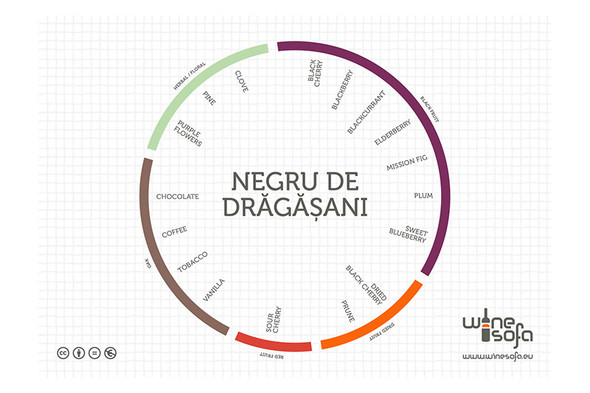Ten years ago, you hardly heard anything about Negru de Dragasani. At that time, Romanian red win meant just one thing, Feteasca Neagra, and not without reason, it has to be admitted.
However, something seems to have changed recently. Several of the country’s most important wineries have established a base in the Dragasani wine region and, that being the case, their German and French winemakers – with their own domestic traditions – have been particularly curious about the local varieties. This is how Negru de Dragasani, as well as the Novac and Cramposie Selectionata varieties have also risen to prominence.
Things get more interesting if you consider that there was a viticultural research institute in the town of Dragasani under Communism, which is still active today, where the above varieties were crossed.
Jancis Robinson wrote the following about Negru de Dragasani in the Wine Grapes book: Recent Romanian cross with the potential to produce soft, fruity reds. Meaning ‘black from Drăgășani’, the recent results from the viticulture research centre in Drăgășani suggest that the parents are Negru Virtos and Băbească Neagră. Obtained in 1993.
Based on our tasting experience, we would say that that the variety is rather characterised by black berry fruit aromas, often underlaid with chocolate notes. It seems that the variety is a good sugar generator since the alcohol content frequently exceeds 14%, however the body is not in tune with the alcohol like, for example, a Merlot or a Cabernet.
It would be wrong to conclude that red wine from the variety best resembles Beaujolais. At best a Beaujolais Cru (like Côte de Brouilly), rather it offers the chance of an alternative for lovers of Malbec.
We have already quoted Jancis Robinson’s book regarding the variety, but we need to add that there is no clear consensus in the world as to which varieties are the parents of Negru de Dragasani. We can agree on Negru Virtos (elsewhere Negru Vartos), but, in some places, the other parent is Saperavi (which according to some is the other parent of the Novac variety), whereas elsewhere (like also in Jancis’s book) it’s Babaesca Neagra. We are still awaiting the opinion of the research institutes.
Download Negru de Drăgășani flavor profile (A3).
For anyone who would like a little more insight into Drăgășani wine region, click here.






